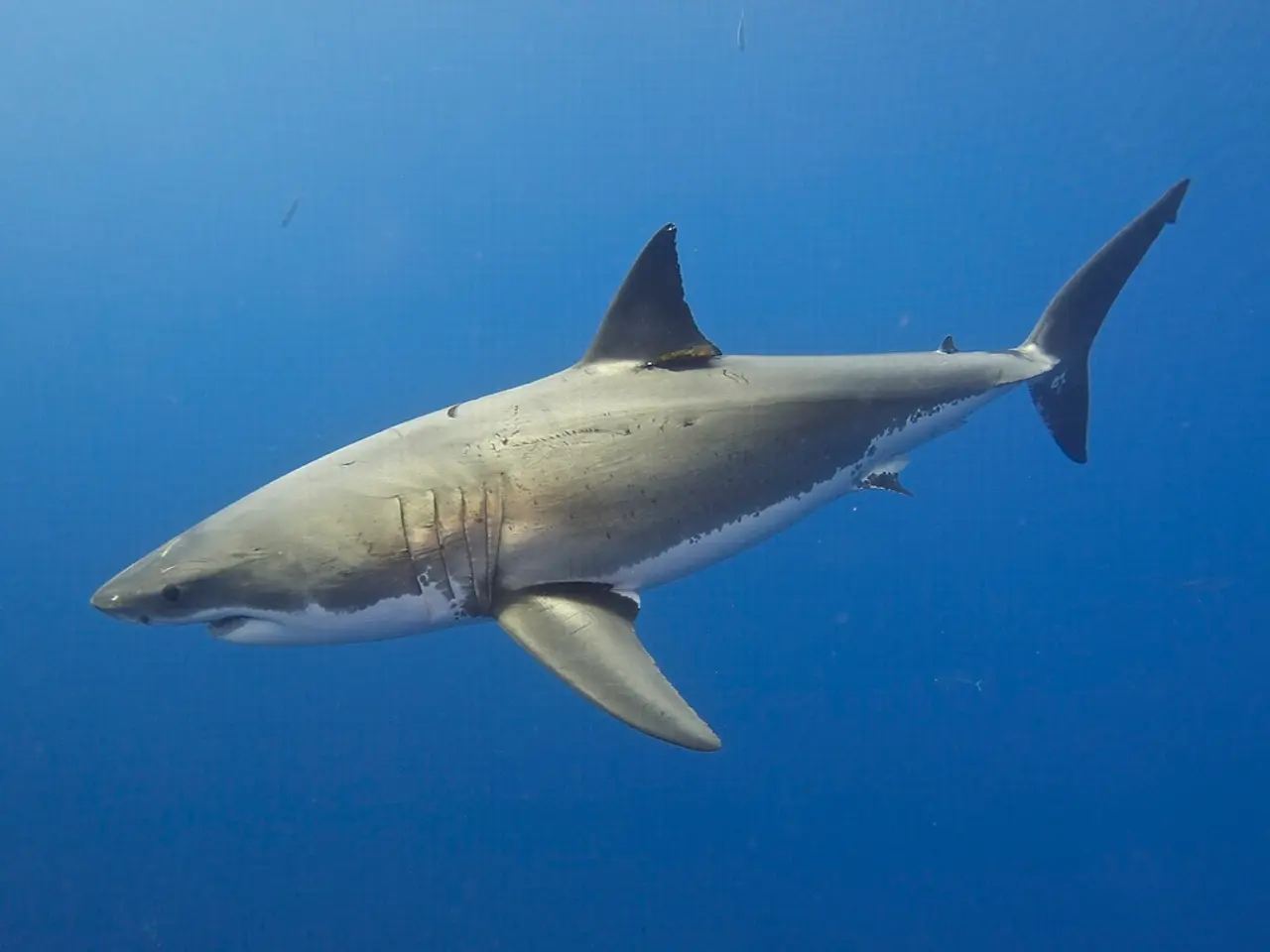Hidden Peril Hiding Deep in North Carolina's Renowned Outer Banks Waters
In the world of marine life, one name has been making waves recently - Contender, a massive great white shark. This adult male shark, estimated to be in his early 30s and in his reproductive prime, has been making headlines as it migrates from its southern wintering grounds towards the temperate summer feeding zones in the northeastern U.S. and Canadian Atlantic waters.
Contender was tagged off the Florida coast in early 2025 with a SPOT satellite fin tag and a PSAT pop-up tag by OCEARCH, a non-profit organisation dedicated to advancing the world's understanding of the ocean. The SPOT tag sends location data when Contender's dorsal fin breaks the water's surface, while the PSAT tag tracks its movements below the surface and will fall off after six months, providing valuable insights into the shark's habits and favourite areas.
As of now, Contender's recent ping was detected near Cape Hatteras and Pamlico Sound, popular areas frequented by beachgoers, kayakers, and surfers. The Cape Hatteras seashore, a part of the Outer Banks, is a favourite family vacation destination.
While the presence of such a large predator might raise concerns, it's essential to remember that shark attacks are extremely rare. Florida, for instance, has the highest counts according to the International Shark Attack File. To protect oneself from sharks while swimming at the beach, experts advise avoiding dawn or dusk swims, swimming in groups close to the shore, and avoiding areas with baitfish or seals, as well as where people are fishing. It's also recommended to steer clear of wearing shiny jewelry or entering the water with open wounds.
If you happen to spot a shark, stay calm and exit the water slowly. Splashing or panicked movement can draw their attention. Pay attention to local advisories and pay attention to your surroundings; if you see fish or turtles making a break for it, they may be avoiding a predator.
In the extremely rare and worst-case scenario that a shark attacks, experts say you should fight back using any gear you have, like a surfboard or paddle. The shark's eyes, nose, and gills are the areas where you can do the most damage in a shark attack.
Contender, weighing 1,653 pounds and measuring 13 feet and 9 inches long, is the largest male great white shark ever recorded in the Atlantic. The shark-curious can monitor Contender's movements using a free real-time tracking app from OCEARCH, which allows users to filter the sharks being tracked by their location, species, or name.
Unfortunately, no relevant information about the current position of another female shark named Contender, tracked by OCEARCH in the Caribbean, could be found in the search results.
Even at the world's most shark-infested beaches, incidents are few relative to the number of swimmers. So, while keeping a safe distance from these magnificent creatures is advisable, let's remember that the odds are on our side when it comes to a peaceful coexistence with these apex predators of the ocean.







